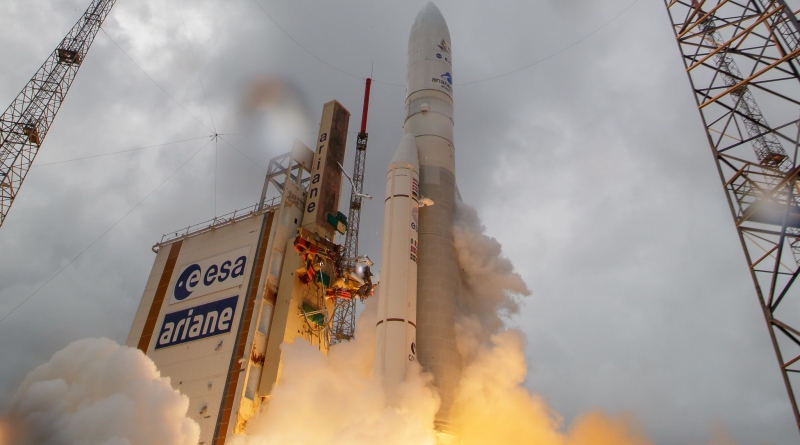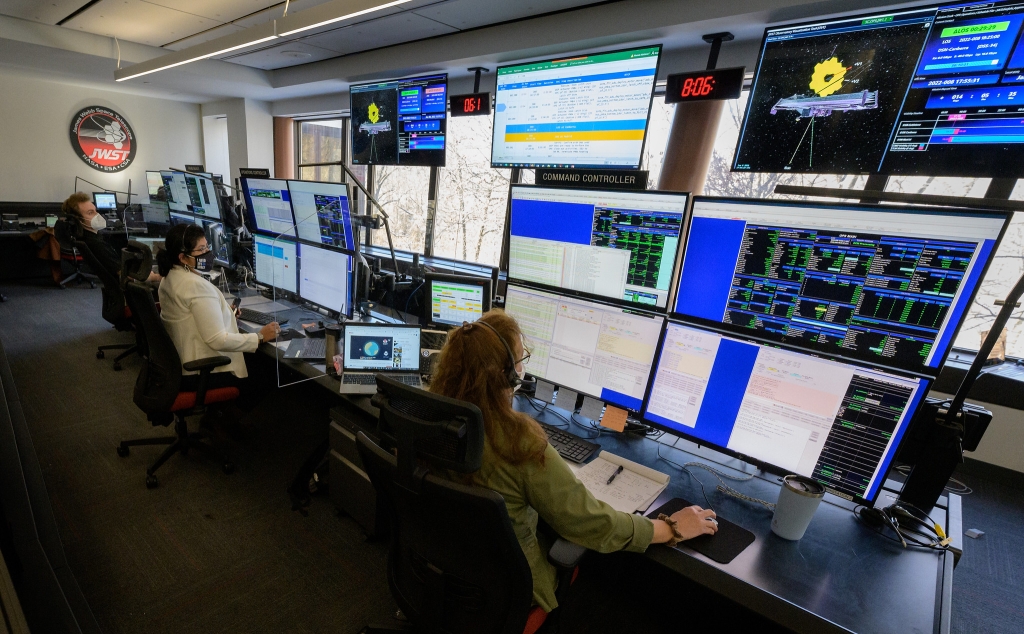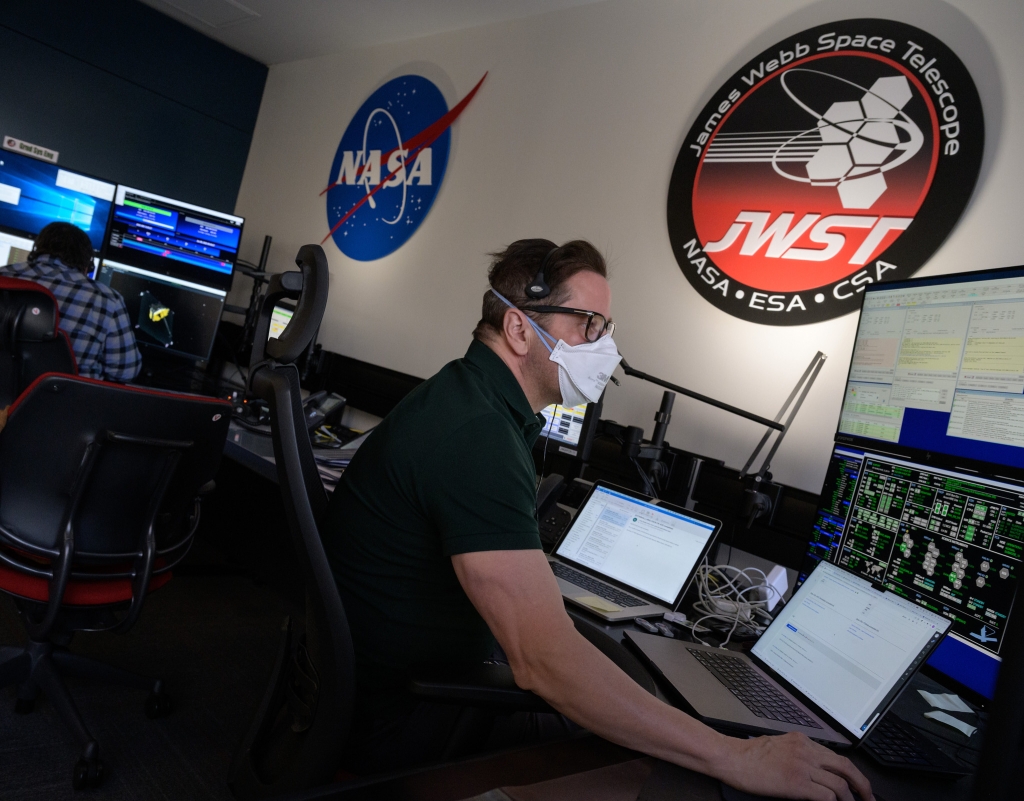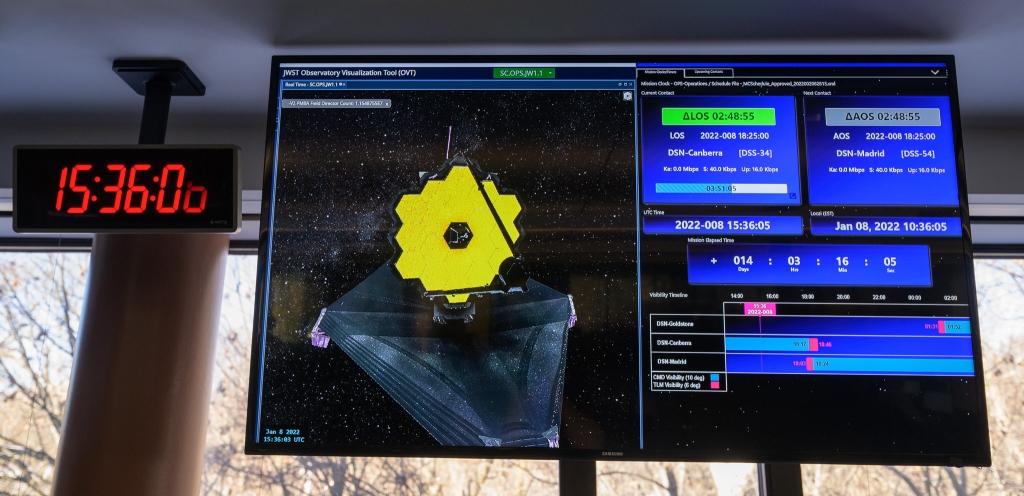James Webb Space Telescope Reaches New Home

After more than a generation of planning, designing and assembly, and 29 days of space flight the JWST has arrived at its orbital position in the solar system. This position is referred to as Lagrange point 2 and is one of 5 possible positions. There are many references available about Lagrange points but generally they are places similar to a regular orbit around a single body, such as earth, but they are generally stable in a multi-body system such as the Earth-Sun combination. Some fuel will be required to hold JWST in its L2 orbit and through good launch precision and mid course corrections there is approximately 20 years of fuel onboard at this time compared to the planned 10 years.

JWST will study space in the infrared portion of the electromagnetic spectrum filling in information not available from Hubble which looked at the visible spectrum, or Chandra which viewed the X-Ray spectrum along with other orbiting observatories. It’s placement at L2 (Lagrange point 2) will help it to cool to about 40 degrees Kelvin. (40 degrees above absolute zero.) The sunshield will be kept pointed toward the Sun, along with the earth and moon, and the telescope itself will be pivoted toward the target of the moment. The instruments then will be chilled to approximately 7 degrees Kelvin to make them more sensitive to the weak infrared radiation from stars and galaxies at the edges of the visible universe. It is hoped that the known size of the universe will be expanded as part of JWST’s observation program.
One of the biggest accomplishments of the program was getting something with a footprint the size of a tennis court and the height of a two story house to fit into a launch fairing. First, the mirror. it wasn’t possible to launch a fully assembled single piece mirror so a design using multiple hexagonal segments each about the height of an average human was created. Three of the segments on each side were folded approximately 90 degrees back from their normal operating position. Since there are multiple segments or mirrors there was a requirement to adjust each mirror to work in concert with the 17 other segments and project a single point of light to the sensors. The telescope design is a reflector so there had to be a secondary mirror to redirect the energy to the instruments located behind the primary mirror (the set of 18 coordinated mirrors). The three supports were folded so the secondary mirror was at the top of the folded mirror and the “top leg actually folded over and behind the primary mirror. When deployed, the secondary mirror will be on a tripod directly in front of the primary mirror pointing to the center of the primary.

The next problem was temperature control. For JWST the solution was shade provided by a series of 5 layers of a material called Kapton which was coated with a layer of aluminum approximately 100 nanometers thick, and for the base or outermost layers an additional coating of doped-silicone approximately 50 nanometers thick. These sheets of material were folded into a long thin package then further folded to fit into the base of the JWST assembly. Deployment involved extending booms fore and aft, then extending additional booms to each side and carefully and slowly pulling the folded layers out. Finally the layers were tensioned by additional tensioning bars oriented nearly perpendicular to the layers of the sunshield. The final shape of the sunshield resembles a traditional diamond shaped kite with a length of 69.5 feet (21.2 M) and a width of 46.5 feet (14.2 M)
Other steps in the deployment included the extension and orientation of the solar panels needed to provide electrical power, and aiming the antennas for communication with earth.

During and after calibration there will be several observation programs: Calibration Programs, General Observer Programs, Directors Discretionary Early Release Science Programs, and Guaranteed Time Observations. From Space Telescope Science Institute:
- "Calibration Programs are observations used to calibrate the science instruments in support of all of the other science programs.”
- “General Observer (GO) Programs are observations and archival research proposed by the community and selected by peer review.”
- “Director’s Discretionary Early Release (DD-ERS) Programs are observations to be executed within the first five months of science operations and immediately released to the community.”
- “Guaranteed Time Observations (GTO) are observations defined by members of the instrument and telescope science teams, as well as a number of interdisciplinary scientists.”

Stunning, full color photo book covering every east coast launch spanning 2014-2015, including the first-ever powered landing of a SpaceX Falcon 9 rocket.
More Info



